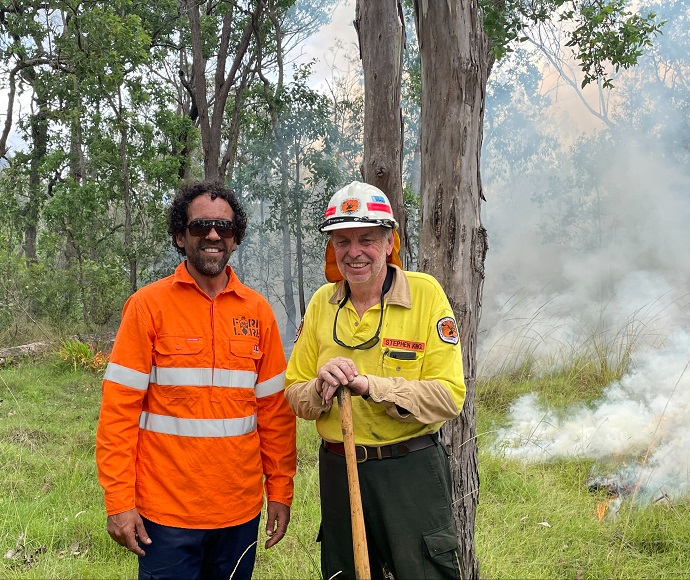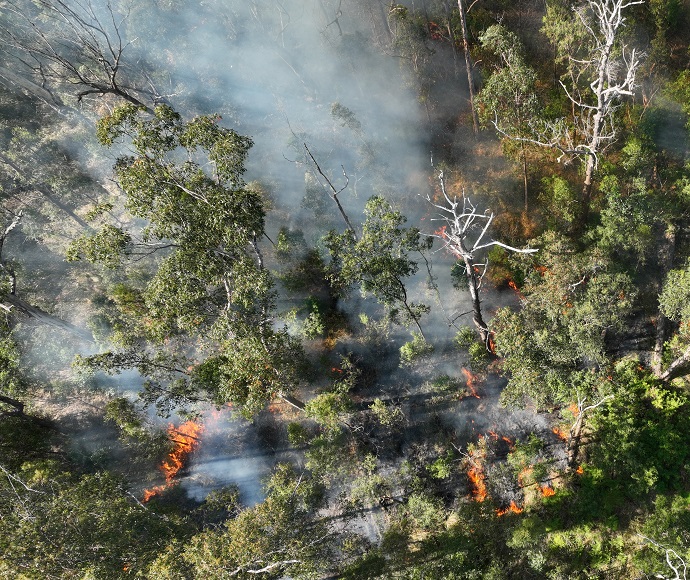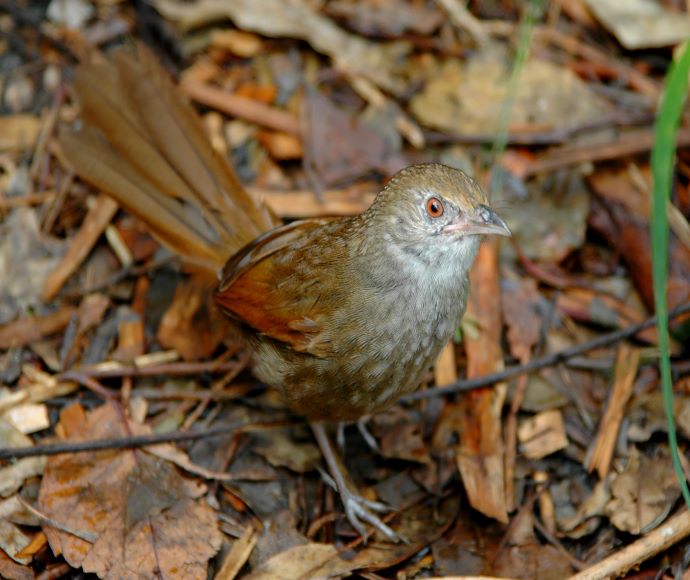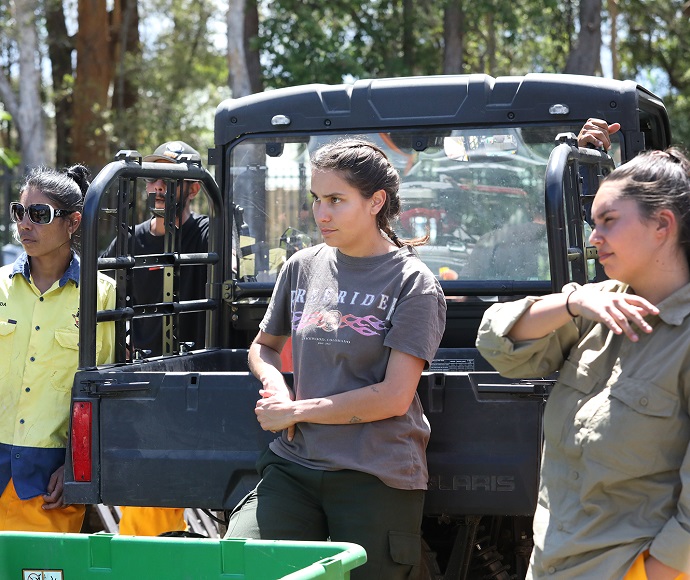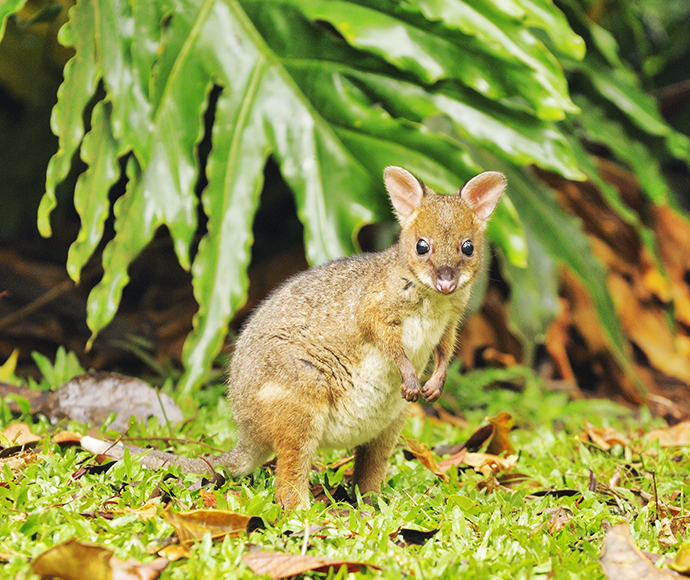Cultural burning to protect threatened species
In northern NSW, cultural burning is helping to secure populations of threatened species that rely on fire to maintain habitat for their survival.
A number of threatened species rely on fire to maintain habitat crucial to their survival. The eastern chestnut mouse (Pseudomys gracilicaudatus), Hastings River mouse (Pseudomys oralis) and eastern bristlebird (Dasyornis brachypterus) rely on open forest with dense tussocky grass understorey. Maintaining the structure of this kind of habitat requires frequent low intensity burns.
In northern NSW, Saving our Species works with Aboriginal groups to plan and implement cultural fire management on both Aboriginal-owned land and on national park estate. This ’cultural burning’ is a cultural fire practice used by Aboriginal people to improve the health of Country and its people. It has been used for over 60,000 years to manage land, plants and animals.
Let’s take a look at some of the projects applying cultural burning to threatened species conservation.
Traditional Owner-led cultural burning – fire fighter training workshop
Saving our Species has supported 30 Aboriginal rangers from 6 organisations to identify, plan and implement burns to protect cultural values on Aboriginal-owned land. The rangers were from Minyumai Indigenous Protected Area, Coffs Harbour Local Aboriginal Land Council, Ashford Local Aboriginal Land Council, Willows Indigenous Protected Area and Yaegl Traditional Owners group.
Through the project, the rangers were supported to deliver cultural values protection and cultural fire management and to build the skills to undertake cultural burns to manage the recovery of Country following the 2019–20 bushfires.
'Cultural burning is how we have managed the land for thousands and thousands of years. It includes Traditional Owners from whichever area it’s taking place. It’s a management system that for thousands of years has looked after each of our ecosystems according to the specific needs of that ecosystem. It takes into account the animals, the plants and the right fire,' said Leeton Lee from Firesticks Alliance.
Saving our Species partnered with Fireground Leadership and Training to deliver the week-long training workshops to the rangers, combining theory and practical activities to give participants the knowledge and skills to perform the role of a basic firefighter at wildfires and prescribed burns.
'Doing this training has provided us with procedures that ultimately keep people safe when we are managing and using fire on different landscapes. The firefighter training is one thing, but the cultural knowledge is a separate thing, and that’s what can really support those threatened species and ecosystems, because it’s the cultural knowledge that helps to maintain the balance in those landscapes,' says Lee.
This project is funded through the Commonwealth Regional Bushfire Recovery for Wildlife and Habitat.
Burning Hotspots – Gondwana Threatened Species and Fire project
Our threatened species experts, together with rangers from NSW National Parks and Wildlife Service and Githabul Native Title holders, are combining traditional and ecological knowledge to deliver cultural burns in the Bandahngan Aboriginal Area, Border Ranges National Park and adjoining private properties.
The cultural burns are part of the Burning Hotspots – Gondwana Threatened Species and Fire project, which aims to help secure threatened populations of 8 species on the north coast of New South Wales, including in World Heritage listed Gondwana Rainforests. These species include:
- three-toed snake-tooth skink (Coeranoscincus reticulatus)
- red-legged pademelon (Thylogale stigmatica)
- long-nosed potoroo (Potorous tridactylus)
- black-striped wallaby (Macropus dorsalis)
- parma wallaby (Macropus parma)
- eastern bristlebird (Dasyornis brachypterus)
- brush sophora (Sophora fraseri)
- native jute (Corchorus cunninghamii).
The 10-year project (2015 to 2025) aims to secure the future of the 8 species through a collaboration involving landholders and Githabul people. The project includes research and implementation of planned fire that benefits the species both on and off park to maintain suitable habitat.
This project is funded through the NSW Environmental Trust's Saving our Species Partnership Grant. Partners include National Parks and Wildlife Service, Northern Rivers Fire and Biodiversity Consortium, Southern Cross University, University of NSW, Forestry Corporation and the Border Ranges Alliance.
Learn more
- Find out more about the Saving our Species program and how we’re securing a future for our threatened species.
- Learn more about fire science and management at NSW Applied Bushfire Science Program and Cultural Fire Management Policy.
